|
  |
|
Page 2 |
Newsletter 132 Spring 2021 © Hampshire Mills Group |
Mills on Field Visits
Keith
Andrew
|
|
As promised in the
last newsletter, here is a final selection of the
mills that Ruth or I visited on the field visits
organised by the University of Southampton Adult
Education Department in conjunction with Southampton
University Industrial Archaeology Group (SUIAG) – as
was, now Hampshire Industrial Archaeology Society (HIAS).
Again, the information about each mill is taken as
is from the notes for the visit prepared by the
leader Dr Edwin Course, so remember that they relate
to the situation at the date of the visit!
|
|
Herringfleet Windpump, near Lowestoft
(TM 466976) – August 1981
A
smock drainage mill, built in 1830
and worked until 1956.
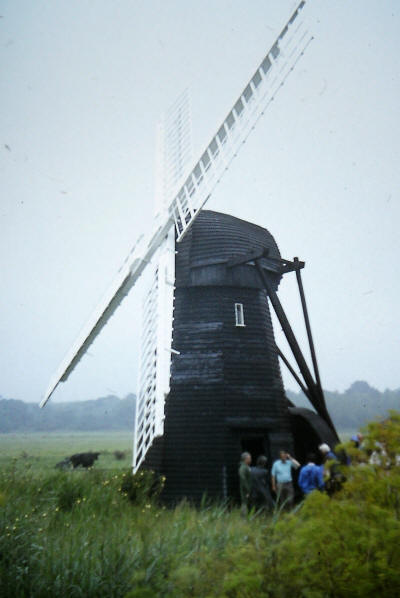 |
Kibworth Harcourt Windmill, Leicestershire (SP
688945) – August 1987
An
18th century post mill, with roundhouse, worked
until about 1916, and now restored.
 |
|
Melin Howell, Anglesey (SH 352845) – August 1988
This is a commercial
working watermill with an overshot wheel, in many
ways comparable to Headley Mill.
KA:
It was closed by 2018.
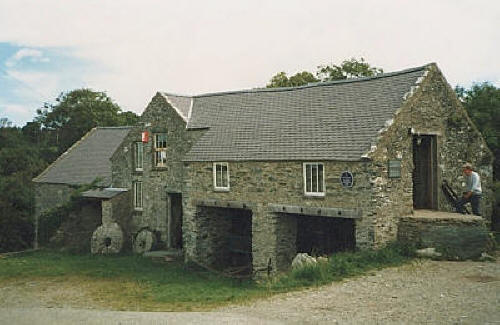
|
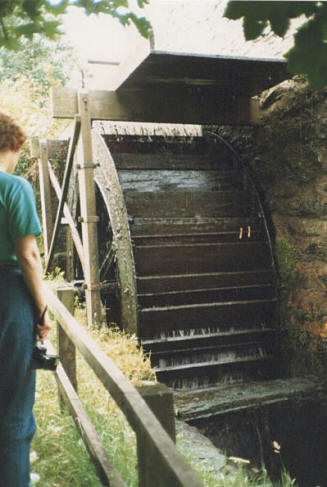 |
|
Caudwell’s Mill,
Rowsley (SK 256657) – August 1987
Although an old
site, the present 4-storey mill dates from 1874.
Originally there were two breast shot wheels and
eleven pairs of stones, but these have all been
replaced: the stones by rollers in 1885 and 1914,
and the wheels by turbines in 1887 and 1896. The
mill is now run by a trust.
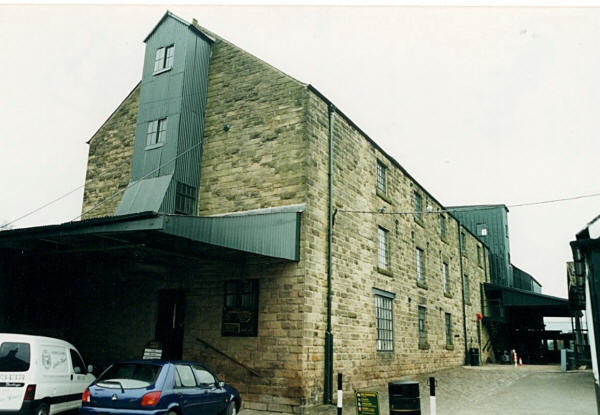
Photos taken on
various dates.
On the left below
are the roller mills, and on the right are the plan
sifters.
|
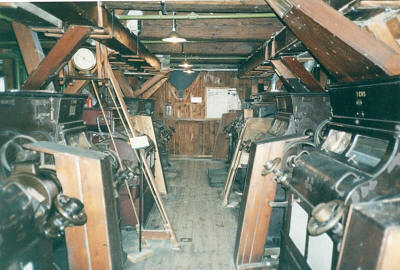 |
 |
|
Bryncir Woollen Mill, near Porthmadog (SH 528424) –
August 1988
Writing in 1968, Geraint Jenkins described this as a
“flourishing mill turning out a great variety of
woollen goods”. He quotes a list from the current
brochure, which included blankets, rugs, quilts,
knitting wools, scarves, ties, and purses, all sold
at the mill. Power was provided from a water
turbine and mains electricity, and production by a
staff of 15. Equipment included two carding sets,
two spinning mules, and 6 looms. In 1987, most of
this information was still valid. The mill was
established in 1830 on the site of a 17th century
fulling mill, and although the water wheel is
disuses, it is still to be seen. We shall be able
to see most of the machinery working.
Photos taken in 1984.
|
 |
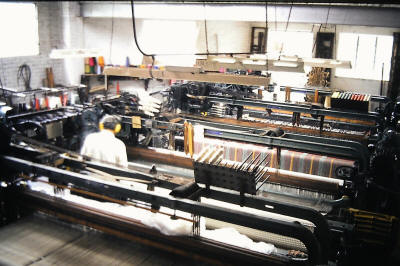 |
|
Worsborough Mill, Barnsley (SE 3480934) – August
1984
The
mill is a two-storey stone-built structure, parts of
which date from the 17th century. It has recently
been restored to working order. KA: See Ruth’s
article in
newsletter 129.
Stanley Mills, Stonehouse (SO 813043) – May 1989
Unusual in being built of brick rather than stone.
Rebuilt in 1812-13 as an early fireproof mill with
cast iron columns down the centre of each floor.
Originally powered by 5 waterwheels, a beam engine
was added in 1820. In 1842 the mill was conveyed to
Nathaniel Samuel Marling; the Marling family later
ran both Stanley and Ebley Mills. The windows are a
most attractive feature of the mill. A private
siding ran from the nearby Midland railway from
about 1891 until about 1930.
KA:
HMG members visited Stanley Mills in May 2010; see
newsletters
89 and
90.
|
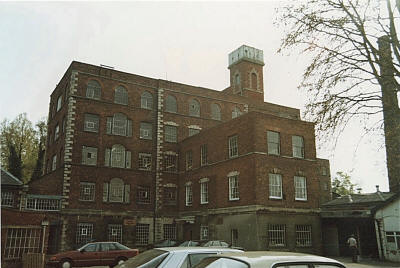 |
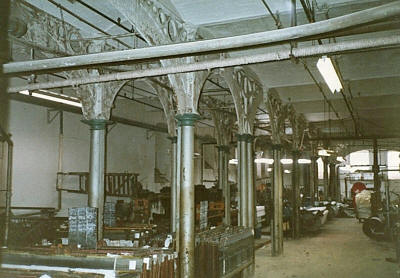 |
|
Felin Geri, near Newcastle Emlyn (SN 300423) –
August 1989
The
centre piece is a 16th century water mill producing
flour, operated by Michael Heycock. From this,
semolina is obtained for use in the adjoining bakery
for making shortbread and biscuits. Associated with
the mill are inhabited pigsties; geese and other
animals are also to be seen. Of special interest is
a water-powered sawmill. No photos available.
KA:
COFLEIN (The online catalogue of archaeology,
buildings, industrial and maritime heritage in
Wales, has more information and pictures
www.coflein.gov.uk/en).
Abermagwr Sawmill and Smithy, Ysywyth Valley (SN
666737) – August 1989
This
estate sawmill, powered by an overshot wheel, is now
disused and may be compared with the example seen at
Felin Geri.
|
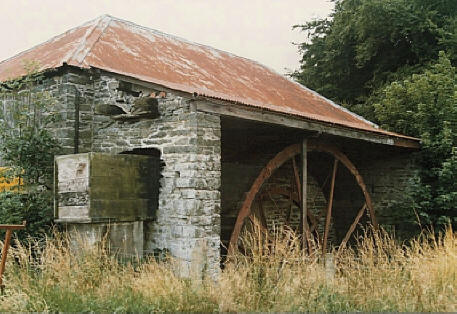 |
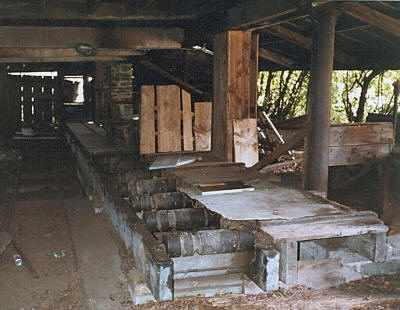 |
|
Felin Newydd, near Dolaucothi (SN 663385) – August
1989
This
is a restored and working corn mill, with a mill on
the site since about 1400. The present mill was
built about 200 years ago, and has been little
changed. Power is provided by an over shot
composite waterwheel. Some of the graffiti reflects
interesting connections with South America.
|
 |
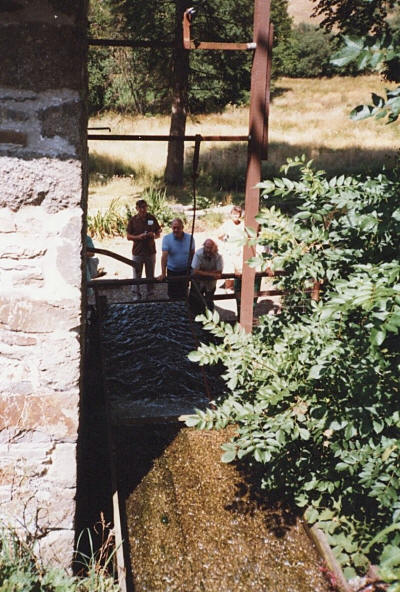 |
|
KA:
COFLEIN says that the waterwheel is iron, 4ft
diameter, and is labelled William Isaac, Carmarthen,
and TMWD 1907. The mill is built into a bank; a
wooden launder runs from the millpond which is fed
by a 700m long leat. There is no information about
the interesting sluice control mechanism that you
can just about see in my rather poor photos. |
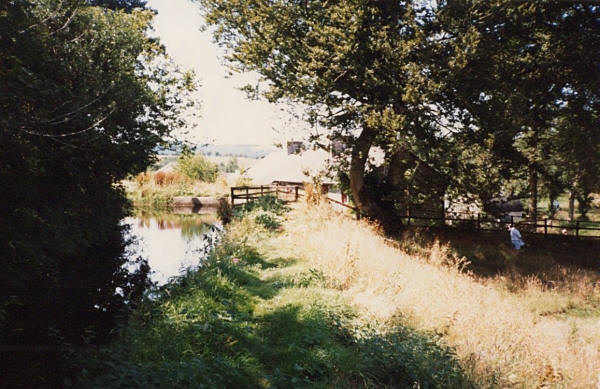 |
|
Muncaster Mill, Cumbria (SD 096977) – August 1990
A
restored bank mill owned by the Ravenglass and
Eskdale Railway, with a separate kiln house. The
overshot wheel has a very long head race which acts
as a mill pond. The present building is around
1700, and the machinery is mostly pre-1850. Flour
is produced for sale.
KA:
Alan Cullen and his wife visited Muncaster in 2019,
when they were invited in to look around by the
recently arrived owners, and took these photos.
|
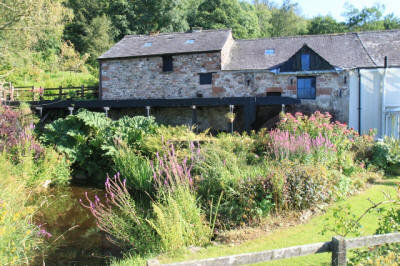 |
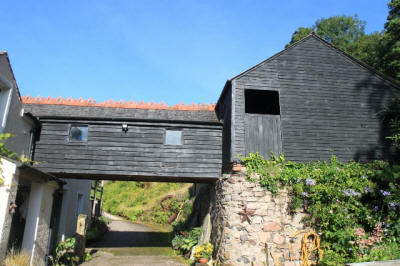 |
|
Stott Park Bobbin Mill, Cumbria (SD 373882) – August
1990
Three of the principal uses for the extensive
woodlands of this area were in the making of iron,
of gunpowder, and of bobbins, mainly for the
Lancashire cotton industry. The bobbin mill at
Stott Park was built in 1835 and closed in 1971. It
contains much of its 19th century equipment.
Photos taken in 2013.
|
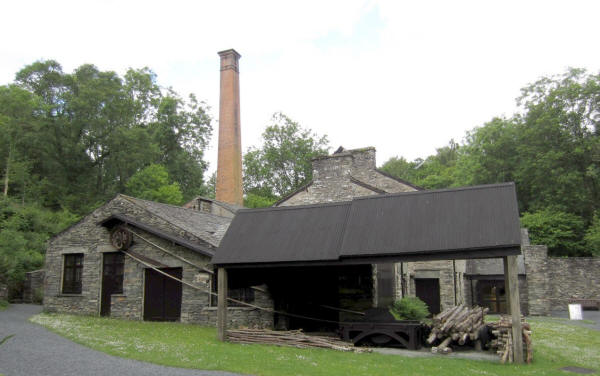 |
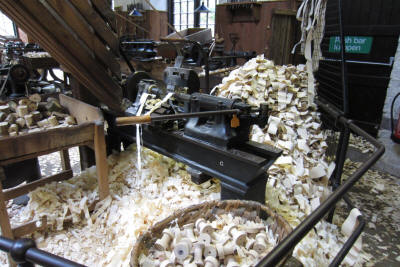 |
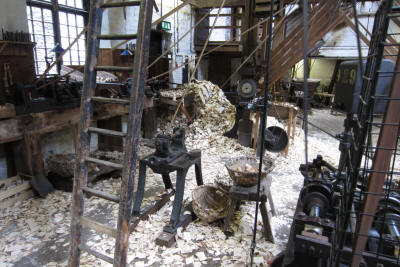 |
|
Swaffham Prior Windmill, near Cambridge (TL 572643)
– September 1990
This
is a four storey tower mill of brick and clunch. It
was built about 1860 by Fisons of Soham, and
restoration of both the structure and the machinery
is now virtually complete. Restoration of the
structure of the vertically boarded smock mill on
the opposite side of the road is underway.
|
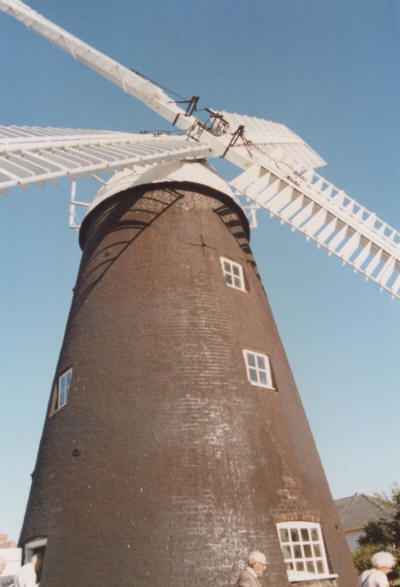 |
 |
|
Lode
Mill at Anglesey Abbey, near Cambridge (TL 531626) –
September 1990
Probably on a medieval site, the present watermill
building belongs to the 18th century – it appeared
in a sale catalogue of 1793. About 1900 it was
adapted from grinding corn to grinding the cement
produced in 6 kilns, linked by a railway line. The
Bottisham Lode Cement & Brick Co was bankrupted in
1920, and the mill fell into disuse.
Lord
Fairhaven purchased the abbey in 1926 and the mill
in 1934. He demolished all traces of cement
manufacture and restored the mill building. Between
1978 and 1982 members of the Cambridge Wind and
Watermill Society restored the machinery to working
order. This includes a breastshot wheel and four
pairs of stones.
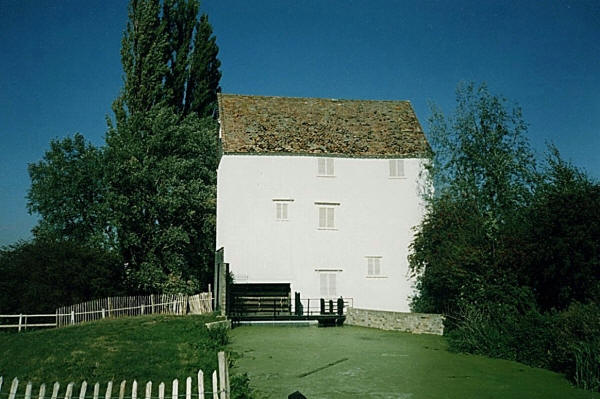
|
Fulwell Windmill,
Sunderland (NZ 392595)
– August 1991
Milling for the towns
of the north east during their period of rapid
expansion was by steam power, but a few wind or
watermills have survived in the industrial area.
There is a tower mill at Whitburn and a restored
tower mill at Fulwell, now surrounded by housing.
It was built of limestone in 1821, and the
machinery is now undergoing restoration.
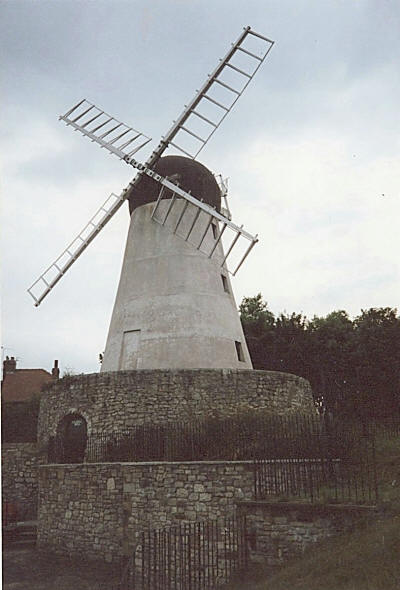 |
|
Stelling Minnis
Windmill, Kent
(TR 146466) – September 1991
A tarred smock mill,
built in 1866, and worked until 1870, with a Ruston
& Hornsby oil engine. It is restored to working
order.
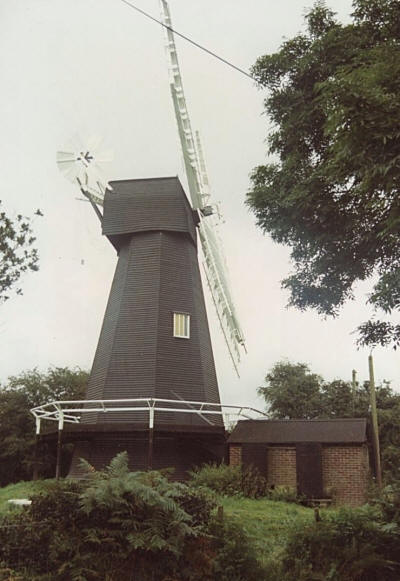 |
|
|
|
|
|
  |
|
|
